When you apply a voltage and briefly disconnect it, does the disk wobble in place or hit each other, or both? does this action work like an on/off switch and connect/disconnect the two discs OR do wobbling discs produce alternating electricity?
The disk doesn't so much wobble as it expands and contracts due to its piezoelectric nature. The Wikipedia article on crystal oscillators has an illustration showing the various modes a crystal might vibrate in. Likely these vibrations are too small to be seen with the naked eye.
if the latter then where does this electricity come from, does the crystal create it out of thin air?
The crystal is piezoelectric so in principle you could apply a mechanical force to it and it would produce a small voltage in response.
Practically, we build the crystal into an oscillator circuit and provide power to it with a battery or power supply, and this is what provides the energy to vibrate the crystal and to produce the oscillator's output signal. In this case, any piezoelectric response to mechanical stimulus (called "microphonics") is undesirable as it produces noise in the oscillator output.
I wanted to compare crystals with the combination of a RF coil and a Capacitor in an LC circuit. Does the crystal oscillator pretty much do the same thing ..
Yes, electrically, the crystal behaves very much like an inductor and capacitor in series.
Its advantage is that it has a higher "Q" factor than can be realized with practical discrete inductors and capacitors, so it provides a sharper resonant peak than an LC circuit can.
and create alternating current in the circuit?
No, this is not what a crystal does and it is not what an inductor-capacitor filter circuit does.
To use a crystal (or LC filter) to produce an alternating current, you must build an oscillator circuit around the resonant element.
There are many such circuits, which apply the resonant element in different ways. One of the simplest conceptually is the Pierce oscillator.
A computer clock consists of a high voltage and a low voltage (i.e 5V and 0V). But the crystal oscillator is alternating current with a sine graph correct? it does't just go from 1 to 0 in an instant? it works like an analogue signal. If so then how does its current get converted to 0V/5V or a square graph?
You can use a comparator or a high gain digital buffer circuit to convert a sinusoidal signal to a digital square wave.
In the case of the Pierce oscillator referenced above, since the gain element is actually a digital inverter, the output is digital (square wave rather than sine wave) and no conversion is required.
